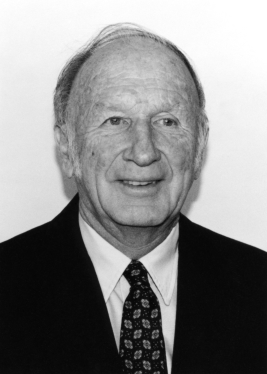Related Research Articles

Jet streams are fast flowing, narrow, meandering air currents in the atmospheres of the Earth, Venus, Jupiter, Saturn, Uranus, and Neptune. On Earth, the main jet streams are located near the altitude of the tropopause and are westerly winds. Jet streams may start, stop, split into two or more parts, combine into one stream, or flow in various directions including opposite to the direction of the remainder of the jet.
In fluid dynamics, turbulence or turbulent flow is fluid motion characterized by chaotic changes in pressure and flow velocity. It is in contrast to a laminar flow, which occurs when a fluid flows in parallel layers, with no disruption between those layers.
In fluid dynamics, the fluid flow is often decomposed into a mean flow and deviations from the mean. The averaging can be done either in space or in time, or by ensemble averaging.

A wide-body aircraft, also known as a twin-aisle aircraft, is an airliner with a fuselage wide enough to accommodate two passenger aisles with seven or more seats abreast. The typical fuselage diameter is 5 to 6 m. In the typical wide-body economy cabin, passengers are seated seven to ten abreast, allowing a total capacity of 200 to 850 passengers. The largest wide-body aircraft are over 6 m (20 ft) wide, and can accommodate up to eleven passengers abreast in high-density configurations.

Wind shear, sometimes referred to as wind gradient, is a difference in wind speed and/or direction over a relatively short distance in the atmosphere. Atmospheric wind shear is normally described as either vertical or horizontal wind shear. Vertical wind shear is a change in wind speed or direction with a change in altitude. Horizontal wind shear is a change in wind speed with a change in lateral position for a given altitude.
The Carl-Gustaf Rossby Research Medal is the highest award for atmospheric science of the American Meteorological Society. It is presented to individual scientists, who receive a medal. Named in honor of meteorology and oceanography pioneer Carl-Gustaf Rossby, who was also its second (1953) recipient.

In meteorology, the planetary boundary layer (PBL), also known as the atmospheric boundary layer (ABL) or peplosphere, is the lowest part of the atmosphere and its behaviour is directly influenced by its contact with a planetary surface. On Earth it usually responds to changes in surface radiative forcing in an hour or less. In this layer physical quantities such as flow velocity, temperature, and moisture display rapid fluctuations (turbulence) and vertical mixing is strong. Above the PBL is the "free atmosphere", where the wind is approximately geostrophic, while within the PBL the wind is affected by surface drag and turns across the isobars.

Jule Gregory Charney was an American meteorologist who played an important role in developing numerical weather prediction and increasing understanding of the general circulation of the atmosphere by devising a series of increasingly sophisticated mathematical models of the atmosphere. His work was the driving force behind many national and international weather initiatives and programs.

Edward Norton Lorenz was an American mathematician and meteorologist who established the theoretical basis of weather and climate predictability, as well as the basis for computer-aided atmospheric physics and meteorology. He is best known as the founder of modern chaos theory, a branch of mathematics focusing on the behavior of dynamical systems that are highly sensitive to initial conditions.
In meteorology, clear-air turbulence (CAT) is the turbulent movement of air masses in the absence of any visual clues, such as clouds, and is caused when bodies of air moving at widely different speeds meet.

The Royal Netherlands Meteorological Institute is the Dutch national weather forecasting service, which has its headquarters in De Bilt, in the province of Utrecht, central Netherlands.

Hendrikus Johannes Everhardus "Henk" Schiffmacher, also known as Hanky Panky, is a Dutch tattoo artist. He is considered an expert within the field of body decoration, having curated exhibitions, written books, and presented television shows on the subject. Schiffmacher has claimed members of the Red Hot Chili Peppers and Pearl Jam, as well as Motörhead frontman Lemmy, to be amongst his clients. RHCP frontman Anthony Kiedis once described Schiffmacher as "an underground philosopher, artist, Hell's Angels associate, booze hound, drug hound, girl hound, an absolute rapscallion of Dutch proportions."
John Leask Lumley was an American fluid dynamicist and a professor at Cornell University. He is widely known for his research in turbulence and is the coauthor of A First Course in Turbulence along with Hendrik Tennekes.

In fluid dynamics, vortex stretching is the lengthening of vortices in three-dimensional fluid flow, associated with a corresponding increase of the component of vorticity in the stretching direction—due to the conservation of angular momentum.
In fluid dynamics, the Taylor microscale, which is sometimes called the turbulence length scale, is a length scale used to characterize a turbulent fluid flow. This microscale is named after Geoffrey Ingram Taylor. The Taylor microscale is the intermediate length scale at which fluid viscosity significantly affects the dynamics of turbulent eddies in the flow. This length scale is traditionally applied to turbulent flow which can be characterized by a Kolmogorov spectrum of velocity fluctuations. In such a flow, length scales which are larger than the Taylor microscale are not strongly affected by viscosity. These larger length scales in the flow are generally referred to as the inertial range. Below the Taylor microscale the turbulent motions are subject to strong viscous forces and kinetic energy is dissipated into heat. These shorter length scale motions are generally termed the dissipation range.
Andrei Sergeyevich Monin was a Soviet and Russian geophysicist, mathematician, and oceanographer. Monin was known for his contributions to statistical theory of turbulence and atmospheric physics. He served as the Director of the P.P. Shirshov Institute of Oceanology of the Academy of Sciences of the Soviet Union. He was instrumental in developing the Shirshov Institute into one of the largest scientific centers for ocean and earth science studies.

Jesse Feras Klaver is a Dutch politician serving as a member of the House of Representatives since 2010 and Leader of GroenLinks since 2015. Prior to this, he chaired the youth union of the Christelijk Nationaal Vakverbond from 2009 to 2010.

Theodore Gordon Shepherd is the Grantham Professor of Climate Science at the University of Reading.
Michael Ghil is an American and European mathematician and physicist, focusing on the climate sciences and their interdisciplinary aspects. He is a founder of theoretical climate dynamics, as well as of advanced data assimilation methodology. He has systematically applied dynamical systems theory to planetary-scale flows, both atmospheric and oceanic. Ghil has used these methods to proceed from simple flows with high temporal regularity and spatial symmetry to the observed flows, with their complex behavior in space and time. His studies of climate variability on many time scales have used a full hierarchy of models, from the simplest ‘toy’ models all the way to atmospheric, oceanic and coupled general circulation models. Recently, Ghil has also worked on modeling and data analysis in population dynamics, macroeconomics, and the climate–economy–biosphere system.

Alexander Robert Hammelburg is a Dutch politician of the Democrats 66 (D66). He has been a member of the House of Representatives since the 2021 general election. He previously worked as a lobbyist for COC Nederland and held a seat in the municipal council of Amsterdam.
References
- ↑ web.archive.org mitpress.mit.edu Author Henk Tennekes. Consulted November 14, 2019.
- ↑ "Archived copy" (PDF). Archived from the original (PDF) on 2012-09-07. Retrieved 2012-01-15.
{{cite web}}: CS1 maint: archived copy as title (link) - ↑ Henk Tennekes Archived 2010-06-17 at the Wayback Machine at the MIT Press
- ↑ The Deniers, Part VIII: The limits of predictability Archived 2011-02-27 at the Wayback Machine - canada.com
- ↑ "Binnenland | Het laatste nieuws uit Nederland leest u op Telegraaf.nl".